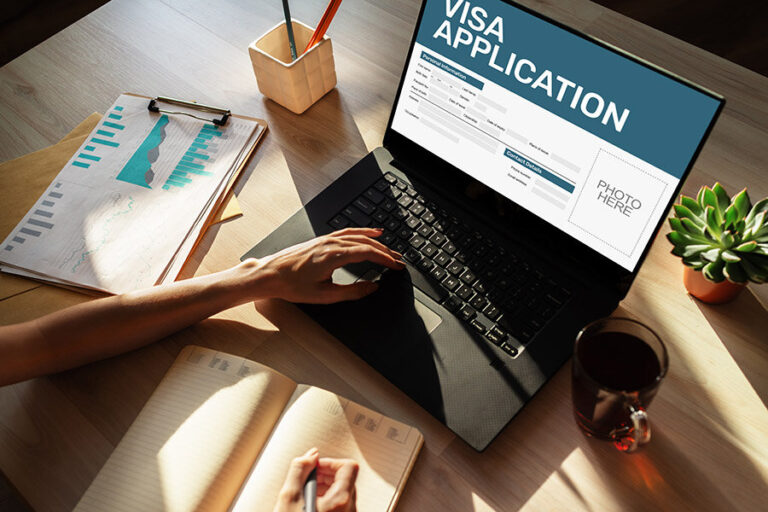You must know: pursuing a STEM (Science, Technology, Engineering, Math) degree as a woman can be financially challenging. But there’s good news — numerous fully funded scholarships for women in STEM exist worldwide (or regionally) in 2025. These scholarships often cover tuition, living expenses, travel, insurance, and more.

In this comprehensive guide, you’ll discover:
- The best fully funded scholarship programs in 2025 aimed at women in STEM
- How to pick the right one for your level (undergraduate, master’s, PhD)
- Step-by-step application tips that actually work
- A clear comparison table to see deadlines, coverage, eligibility
- Answers to frequent questions (FAQs)
By the time you finish reading, you’ll have a concrete list of opportunities and know exactly which ones to apply for. Let’s dive in!
Why Fully Funded Scholarships for Women in STEM Matter
- Bridging the gender gap: Women remain underrepresented in many STEM fields; financial support helps more women pursue degrees, research, and leadership roles.
- Reducing debt burden: Fully funded means you don’t carry heavy student loans — which is crucial in regions where paying off debt is a huge challenge.
- Encouragement & visibility: When you see women winning scholarships and excelling in STEM, it inspires others and helps dismantle stereotypes.
- Access to global networks: Many top scholarships bring you into global cohorts, mentorship, conferences, internships.
Given that the demand for skills in AI, data science, bioengineering, clean tech, robotics, and climate science is rising — now is a perfect time to aim high.
How I Selected These Scholarships
Here’s what I looked for:
- Fully funded (or extremely high coverage) — not just partial grants.
- Open (or planning to open) in 2025 with reliable track record.
- Specifically or partially for women in STEM (or women + STEM fields)
- International eligibility or wide reach (not too restricted to certain nations only)
- Transparent criteria & credible organizers
I used sources like university announcements, foundations, government/NGO programs, scholarship databases. (E.g. Bold.org, WomenInScience, TopUniversities) (Bold)
Top Fully Funded Scholarships for Women in STEM (2025)
Here are some of the strongest candidates you should explore. Always check the official website for latest deadlines and eligibility updates.
| Scholarship | Level / Fields | Coverage / Benefits | Eligibility & Key Notes | Deadline / Status for 2025 |
|---|---|---|---|---|
| Pioneering Women in STEM (Swedish Institute) | Master’s | Fully funded (tuition, stipend) | Women from certain African/Asian nations. (Svenska institutet) | Open in cycles (check SI website) |
| British Council Scholarships for Women in STEM (Brunel / UK) | Postgraduate | Fully funded: tuition, stipend, travel, visa, insurance | Female international students in STEM (Brunel University) | For 2025–26 cycle (applications now closed) |
| Science Ambassador Scholarship | Undergraduate | Full tuition (previous model) or large awards | Women & nonbinary in STEM; applicants submit video (Science Ambassador Scholarship) | For 2025, application open till Dec 15, 2025 (Science Ambassador Scholarship) |
| Society of Women Engineers (SWE) Scholarships | Undergrad / Graduate | Up to $15,000 USD | Applicants must identify as female and pursue engineering, CS, etc. (Women in Science) | Varies by region |
| Women Techmakers (Google) Scholarship | Undergraduate / Graduate | ~$10,000 USD (or CAD equivalent) | Women in CS, engineering, tech, from many regions (Women in Science) | Rolling or fixed deadlines |
| MPOWER Financing Women in STEM Scholarship | Undergrad / Graduate | Cash awards up to $5,000 | International / DACA women in STEM at MPOWER–eligible schools (Mpower Financing) | Deadline ~ Jan 2026 |
| Progress Women in STEM Scholarship Series | Undergraduate (CS/IT) | $10,000 (renewable) | Women in US, Bulgaria, India in CS/IT fields (Progress Investors) | Applications open in 2025 |
| Zonta International Women in STEM Award | Various | $10,000 USD | 16 international awards for women in STEM (zonta-district29.org) | Deadlines vary; next one due Dec 15, 2025 (zonta-district29.org) |
⚠️ Tip: Even if a scholarship’s 2025 cycle is closed, prepare now — many open annually at similar dates. Watch their “notify me” or mailing list options.
Deep Dive: Standout Scholarships
Pioneering Women in STEM (Swedish Institute)
This is a flagship fully funded master’s scholarship for women from 10 designated countries in Africa and Asia. It covers tuition, living stipend, travel, and more. (Svenska institutet)
If you are from Nigeria, Kenya, Rwanda, Bangladesh, etc., this is one to watch.
Science Ambassador Scholarship
The Science Ambassador Scholarship is unique — previously full tuition, now awarding sizable scholarships (~$20,000) to women & nonbinary in STEM. Applicants submit a 3-minute educational video on a STEM topic. (Science Ambassador Scholarship)
It’s excellent if you are a strong communicator and want to stand out.
Women Techmakers (Google)
Google’s Women Techmakers / Women Techmakers Scholars (formerly Google AnitaB.org) offers $10,000 (or equivalent in local currency) for women in tech/CS globally. It also includes a retreat, mentorship, and networking. (Women in Science)
Society of Women Engineers
SWE is highly respected and has long supported women in engineering and computing fields. Their scholarships are competitive but well established. (Women in Science)
How to Choose the Best Scholarship for You
When multiple options exist, how do you decide which to pursue? Here are key criteria:
- Your level of study
- Undergraduate vs Master’s vs PhD
- Some scholarships are only for undergraduates (e.g. Science Ambassador), others for postgraduate (e.g. Pioneering Women)
- Field / specialization
- Some scholarships accept any STEM major; others favor computer science, engineering, AI, or data science
- If your specialization is niche, pick those that explicitly allow it
- Geographic / citizenship eligibility
- Some are global, others restricted by country or region
- E.g. Pioneering scholarships accept women from certain African/Asian countries
- Coverage breadth
- Tuition only, or full living expenses, travel, visa, health insurance
- Fully funded is ideal but rare — partially funded ones can still help
- Competition and selectivity
- High prestige → fierce competition
- In early cycles, some new scholarships have fewer applicants; you may have an advantage
- Application requirements
- Essays, research proposals, videos, interviews
- Match your strengths (if you’re strong at video, go for Science Ambassador)
- Renewability and duration
- Is it one year or renewable across multiple years?
- Does it cover full degree or just one academic year?
Make a short matrix: for each scholarship, rate yourself in eligibility, strength of application, chances — then apply to several you genuinely stand a shot at.
Application Strategy: How to Win These Scholarships
Winning doesn’t just mean having good grades — many top candidates get rejected because they didn’t package their application well. Here’s your actionable roadmap:
- Set a timeline / calendar
- Most scholarships have fixed windows — note deadlines now
- Work 6–12 months ahead, so you aren’t rushing
- Use a spreadsheet to track each scholarship: name, deadline, checklist
- Craft a standout research/impact proposal
- Many STEM scholarships require a short proposal or explanation of what you will do
- Use clear language; tie your idea to real-world impact
- Cite credible sources or data (e.g. climate change statistics, AI adoption)
- Tell your story (personal statement / video)
- Why STEM? Why you?
- Showcase challenges you overcame, your passion, leadership
- For video-based ones, rehearse, storyboard, make it polished
- Gather strong letters of recommendation
- Choose recommenders who know your STEM skills (professors, mentors, project supervisors)
- Provide them with your CV, draft statement, and details
- Request early — people are busy
- Highlight extracurricular / research experience
- Projects, internships, hackathons, lab work
- Even side projects or open-source contributions matter
- Proofread and refine
- Get peers, mentors, or writing centers to review
- Cut unnecessary jargon; be direct
- Match the tone and mission of the scholarship
- Apply to multiple scholarships
- Even if you have one favorite, don’t put all your eggs in that basket
- Apply to 3–7 that fit you
- Follow up & prepare for interviews
- Some finalists will be interviewed — practice speaking clearly
- Prepare for common questions: why STEM, your goals, challenges
- Stay organized after submission
- Mark notification dates
- Keep all application documents (essays, transcripts) — reuse parts for other apps
Region-Specific & Supplemental Opportunities (for Africa, Asia, etc.)
Because many women in STEM are from the Global South, here are scholarships tailored or open to those regions.
- Pioneering Women in STEM (Swedish Institute) — open to women from select African and Asian countries. (Svenska institutet)
- British Council Scholarships for Women in STEM — open to female international students in certain countries. (Brunel University)

- IIT Bombay WINGS scholarship (starting 2026) — 100% tuition for female STEM undergrads in India. (Indiatimes)
- Groundbreaker Talents — for African women in tech/digital sectors, offering scholarships for residential tech programs. (Wikipedia)
- Zonta International Women in STEM Award — global eligibility, strong if you’re outside Western regions too. (zonta-district29.org)
If you tell me your country or region, I can help you find more targeted ones (e.g. Nigeria, Kenya, India, Latin America).
Sample Application Timeline (for 2025 cycle)
Here’s a suggested timeline you can adapt:
| Month | Actions |
|---|---|
| January–February | Research scholarships, shortlist 5–10, set application calendar |
| March | Gather transcripts, previous works and project portfolios |
| April | Draft personal statements, research proposals |
| May | Request letters of recommendation |
| June | Revise essays, get peer feedback |
| July | Create video (if required), finalize all documents |
| August | Submit early where possible, check for application errors |
| September | Follow up on submissions, prepare for interviews |
| October–November | Interview stage, wait for selection results |
| December | Scholarship offers come; accept and prepare logistics (visa, travel) |
Adjust based on your region’s academic calendar.
Common Mistakes to Avoid
- Waiting until the last minute
- Applying to only one scholarship
- Focusing too much on technical content and neglecting your personal story
- Submitting generic essays (not tailored to the scholarship mission)
- Not verifying eligibility (especially citizenship, field, or level)
- Poor formatting, typos, weak video/audio quality
Frequently Asked Questions (FAQs)
Q: Are fully funded scholarships only for top-tier students?
A: Not always. While many winners have excellent credentials, some scholarships value potential, impact, leadership, and diversity/background over perfect GPA. Don’t self-eliminate — apply if you meet basic eligibility.
Q: Can I apply if I’m already studying in STEM (not a freshman)?
A: Yes, many scholarships allow continuing students. For example, the Women In STEM Scholarship (Pathways to Science) includes current undergrads and graduate students. (pathwaystoscience.org)
Q: Do I need to pay back a fully funded scholarship?
A: No — by definition “fully funded” means it’s a grant/scholarship, not a loan. Just fulfill any conditions (maintaining GPA, program requirements).
Q: Can I apply to scholarships in other countries?
A: Yes, many are open to international applicants. But check visa, language, and admission requirements early.
Q: Is it okay to apply to partial/lesser scholarships too?
A: Definitely. Partial scholarships reduce your burden and increase chances of getting something.
Q: What if my country doesn’t have many scholarships?
A: Apply to global ones (e.g. Science Ambassador, Google, SI) and also check local foundations, industry associations, and your university.
Conclusion
Securing a fully funded scholarship for women in STEM in 2025 is absolutely possible — it just requires planning, persistence, and a strong, authentic application.
Here’s your action plan:
- Decide your top 3 scholarship targets now.
- Build a timeline and checklist.
- Begin drafting essays, proposals, videos well in advance.
- Leverage any unique story you have — your background, passion, challenges.
- Apply broadly and early.
If you tell me your country, level (undergrad, master’s, PhD), and STEM specialization (CS, engineering, biotech, etc.), I can help tailor a list of 10–20 additional scholarships you should apply to. Would you like me to build that for Nigeria (or your country) now?




















